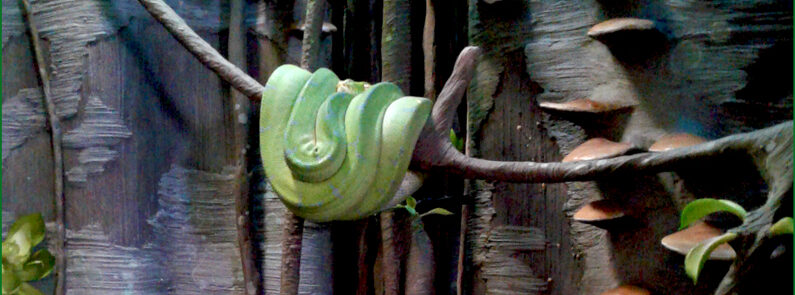Emerald tree boas (Corallus caninus) are one of the most captivating arboreal snakes in the world. Known for their striking green coloration and mesmerizing patterns, these snakes have become highly sought after in the reptile enthusiast community. If you’re considering breeding emerald tree boas, this article will provide you with essential tips for a successful breeding experience.
1. Select Healthy Adult Specimens
Breeding starts with choosing healthy adult emerald tree boas. Ensure that your snakes are free from diseases and parasites. Regular vet check-ups are essential to keep your breeding stock in peak condition.
2. Mimic Their Natural Habitat
Emerald tree boas thrive in high-humidity environments with ample vertical space. Create a suitable habitat with live plants and branches to mimic their natural rainforest home. Proper humidity levels are crucial for successful breeding.
3. Temperature Regulation
Maintaining the right temperature gradient is vital. Keep the daytime basking spot at around 85-90°F (29-32°C), and the cooler side at 75-80°F (24-27°C). This temperature variation is crucial for breeding and maintaining the health of your snakes.
4. Introduce a Cooling Period
In their natural habitat, emerald tree boas experience seasonal temperature variations. To simulate this, provide a cooling period for 8-12 weeks with temperatures dropping to 75°F (24°C). This will trigger the breeding behavior.
5. Time the Mating
Once the cooling period ends, gradually increase the temperature and introduce a male to the female’s enclosure. Observe their interactions, as emerald tree boas may display aggressive behavior during courtship.
6. Provide Suitable Nesting Sites
Females will need a secure and humid nesting site to lay their eggs. A large plastic container with moist substrate is ideal. Ensure she has privacy during this process.
7. Incubation
After laying eggs, carefully move them to an incubator. Maintain a constant temperature of 86-88°F (30-31°C) and high humidity (95%) in the incubator. This will ensure successful egg development.
8. Monitor Egg Health
Regularly check the eggs for mold and fungus. Remove any contaminated eggs to prevent the spread of infections to the healthy ones.
9. Hatching and Rearing
Emerald tree boa eggs typically hatch in 60-70 days. Once hatched, provide adequate space for the neonates. Offer appropriately sized prey and monitor their growth closely.
10. Document and Learn
Keep detailed records of breeding dates, egg laying, and hatchling progress. This information will be invaluable for future breeding attempts and improving your techniques.
In conclusion, breeding emerald tree boas can be a rewarding experience for dedicated reptile enthusiasts. By following these tips and maintaining a high level of care and attention, you can increase your chances of successfully breeding these beautiful snakes. Remember that patience and dedication are key when working with these mesmerizing creatures.
For more expert insights into reptile breeding, habitat design, and herpetology, stay tuned to our blog.

